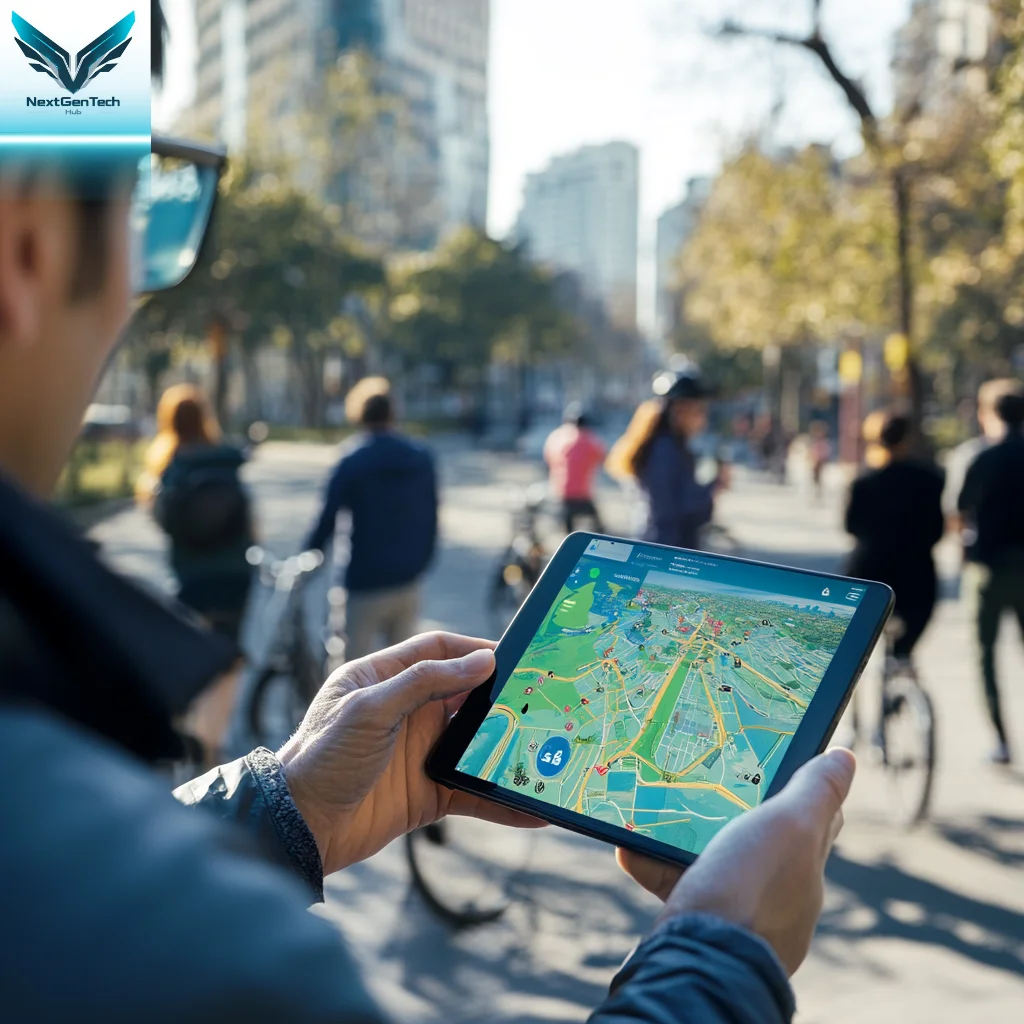Ebike commuting has become more than just a trend; it’s a sustainable and smart way to navigate our increasingly congested cities. By choosing the right ebike trails, you can not only save time and avoid traffic but also enjoy a healthier, more scenic journey to work. This comprehensive guide will help you map the best ebike trails for commuters, providing detailed, step-by-step instructions, up-to-date statistics, product recommendations, and practical tips to enhance your riding experience.

Table of Contents
- Introduction: The Rise of Ebike Commuting
- Key Factors to Consider When Choosing Ebike Trails
- Step-by-Step Guide to Mapping the Best Ebike Trails
- Essential Digital Tools and Apps for Ebike Commuters
- Top Ebikes for Commuting: Reviews and Comparisons
- Tips for Safe and Comfortable Ebike Commuting
- FAQs: Ebike Commuting and Trail Mapping
- Conclusion: Enhancing Your Commute with the Right Ebike Trails
Introduction: The Rise of Ebike Commuting

As urban areas continue to expand and traffic congestion worsens, more people are turning to ebikes as a practical and eco-friendly alternative to cars and public transport. A recent study by Deloitte indicates that over 300 million ebikes are now in circulation worldwide, a significant increase from previous years. The reasons are clear: ebikes offer a faster, more flexible way to get around, especially for those who want to combine their daily commute with a bit of exercise.
Why Map the Best Ebike Trails?

While ebikes provide the means, choosing the right trail is what makes commuting enjoyable and efficient. Well-mapped trails can help you:
- Reduce Travel Time: Avoid unnecessary detours and traffic bottlenecks.
- Increase Safety: Opt for safer paths with fewer vehicles.
- Enhance Enjoyment: Enjoy scenic views and relaxing surroundings.
- Promote Health: Combine exercise with daily commuting.
- Lower Stress Levels: Avoid the anxiety of traffic jams and delays.
Key Factors to Consider When Choosing Ebike Trails

Before diving into the mapping process, it’s important to understand what makes a trail ideal for commuting by ebike:
- Safety and Security: Look for trails with low traffic, good visibility, and proper signage.
- Directness: The shortest route isn’t always the best, but avoiding excessive detours is key.
- Surface Quality: Smooth, well-paved paths reduce wear on your ebike and make for a more comfortable ride.
- Accessibility: Consider how easy it is to access the trail from your home and workplace.
- Amenities: Trails near cafes, rest stops, bike repair stations, and public restrooms add convenience.
Step-by-Step Guide to Mapping the Best Ebike Trails
Step 1: Determine Your Commuting Goals and Route Preferences

To begin mapping the ideal ebike trail for commuting, it’s essential to understand your specific goals and preferences. Consider factors like:
- Commute Distance and Time: How far are you willing to commute each day? What is the maximum time you can spend on your ride?
- Physical Condition and Riding Style: Are you looking for a gentle ride or something more physically demanding?
- Weather and Environmental Conditions: Do you need routes that provide shade or cover during rain?
- Scenic vs. Direct Routes: Would you prefer a scenic, leisurely ride or the most direct, time-efficient path to work?
These considerations help you prioritize what matters most for your daily commute, allowing you to choose routes that align with your comfort and lifestyle.
Step 2: Research Available Trails and Routes

Research is the cornerstone of effective trail mapping. Start by exploring local resources:
- City and Regional Maps: Most cities provide maps highlighting bike-friendly roads and dedicated paths.
- Community Input: Join local biking communities or forums (e.g., Bike Forums, Reddit’s r/bikecommuting) to get recommendations and reviews of local trails.
- Local Government Websites: These often have updates on new bike lanes or trail improvements.
According to a survey by PeopleForBikes, cities with more than 50 miles of bike lanes have seen a 20% increase in biking commuters.
Step 3: Use Technology to Map Efficient Ebike Trails

Utilize digital tools and apps to find and map out the most efficient routes:
- Google Maps: Use the “Cycling” feature to highlight bike paths and lanes. Google Maps also offers real-time traffic updates and estimated times for bike routes.
- Komoot: Known for its detailed route planning, Komoot provides insights into the terrain, surface type, and difficulty level of bike trails. It also allows offline access.
- Strava: A favorite among cyclists, Strava offers route suggestions based on popular rides in your area. You can also track your speed, distance, and elevation.
- Ride with GPS: This tool provides customizable route planning and detailed maps that include elevation profiles and turn-by-turn navigation.
Pro Tip: Use a combination of these tools to compare routes and choose the one that best fits your needs. For example, you might use Google Maps for its real-time updates and Komoot for its offline capabilities.
Step 4: Evaluate Trail Safety, Comfort, and Amenities

Not all trails are created equal. Once you have potential routes mapped out, consider these factors:
- Safety: Are there dedicated bike lanes, or will you be sharing the road with vehicles? Look for trails with good lighting and visibility.
- Comfort: Consider the surface type (e.g., asphalt, gravel), trail width, and incline. Smooth, wide trails with gentle inclines are ideal for commuting.
- Amenities: Trails near cafes, water fountains, bike repair shops, and rest areas add comfort and convenience to your commute.
- Surroundings: Trails passing through parks, green spaces, or along waterfronts can make your commute more enjoyable and less stressful.
Statistics: According to a study by the League of American Bicyclists, bike paths that are separated from traffic reduce accident risk by 50% compared to those on roads shared with vehicles.
Step 5: Experiment and Optimize Your Route

After identifying and mapping potential trails, test them out:
- Try Different Routes: Experiment with a few different paths to see which one offers the best combination of safety, efficiency, and enjoyment.
- Time Your Commute: Track the time it takes for each route to find the most efficient option.
- Stay Updated on Changes: Trails may undergo construction, maintenance, or improvements. Stay updated through city websites or community groups.
- Optimize for Weather and Time of Day: Some trails might be more suitable for sunny days, while others offer better shelter during rain or wind.
Product Tip: Consider the Cannondale Treadwell Neo 2 EQ, priced at around $2,375, a versatile ebike ideal for city commuting. It comes with integrated lights and fenders, making it a great choice for various weather conditions and trail types.
Essential Digital Tools and Apps for Ebike Commuters

| App/Tool | Features | Pros | Cons | Ideal For |
|---|---|---|---|---|
| Google Maps | Real-time traffic, bike lanes | Free, widely accessible | Limited trail-specific details | General commuters |
| Komoot | Route planning, offline maps | Detailed trail data | Premium features are paid | Adventure and city commuters |
| Strava | Community-driven routes, ride tracking | Social features, popular route data | Subscription required for advanced features | Fitness-focused commuters |
| Ride with GPS | Custom route planning, turn-by-turn navigation | Comprehensive maps, elevation profiles | Subscription required | Serious cyclists and route planners |
Top Ebikes for Commuting: Reviews and Comparisons
1. Cannondale Treadwell Neo 2 EQ

- Price: $2,375
- Features: Lightweight frame, integrated lights, fenders, and rear rack.
- Pros: Versatile for both urban and off-road trails, good battery range.
- Cons: Mid-range price point may be steep for budget-conscious buyers.
- Best For: Commuters seeking a balance between urban and off-road riding.
2. Specialized Turbo Vado SL 4.0
- Price: $3,750
- Features: Ultra-lightweight design, long-range battery, integrated display.
- Pros: Exceptional build quality and range, great for long commutes.
- Cons: Higher price range.
- Best For: Commuters looking for high performance and long-distance capabilities.
3. Ride1Up 700 Series
- Price: $1,695
- Features: 750W motor, hydraulic brakes, LCD display, comfortable seating.
- Pros: Affordable, powerful, and well-suited for urban commuting.
- Cons: Basic design may not appeal to all.
- Best For: Budget-conscious commuters looking for high value.
Tips for Safe and Comfortable Ebike Commuting

- Wear a Helmet: Always wear a certified helmet to protect yourself from potential accidents.
- Use Lights and Reflectors: Ensure your ebike is equipped with front and rear lights, especially for early morning or late evening rides.
- Dress Appropriately: Wear comfortable, weather-appropriate clothing and consider reflective gear for visibility.
- Regular Maintenance: Check your tires, brakes, and battery regularly to ensure optimal performance.
- Follow Traffic Rules: Obey all traffic signs, signals, and road markings.
FAQs: Ebike Commuting and Trail Mapping

- What makes a good commuter ebike? Look for features like a reliable battery, good suspension, durable tires, and built-in lights for safety.
- Can I ride my ebike on any bike trail? Not necessarily. Some trails restrict motorized bikes, including ebikes. Check local regulations before planning your route.
- What is the best app for mapping ebike routes? Google Maps is widely used and free, but Komoot offers more detailed trail data and is ideal for serious commuters.
- How often should I maintain my ebike? Regularly check tire pressure, brakes, and the battery. A monthly tune-up is recommended for daily commuters.
Conclusion: Enhancing Your Commute with the Right Ebike Trails
Mapping the best ebike trails for commuting is a dynamic process that involves research, technology, and personal experimentation. By understanding your needs, using the right tools, and staying informed about local developments, you can optimize your commute for safety, efficiency, and enjoyment. Whether you are a daily commuter or a weekend warrior, the right trail can transform your ebike experience from mundane to magnificent.
